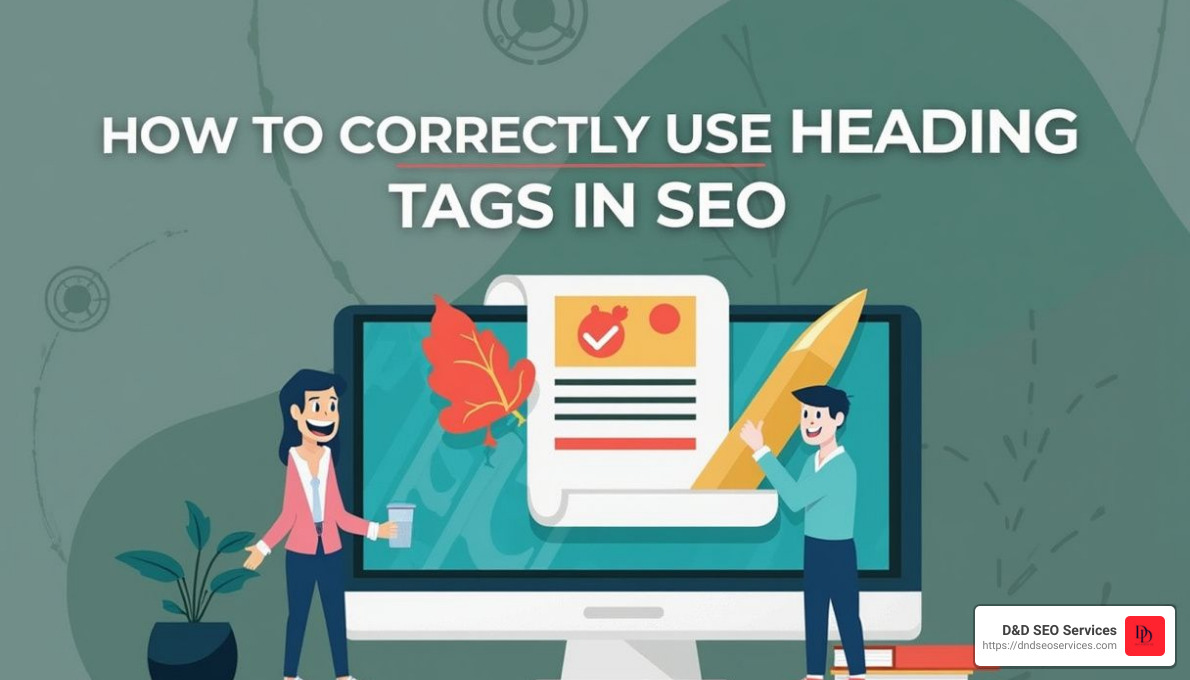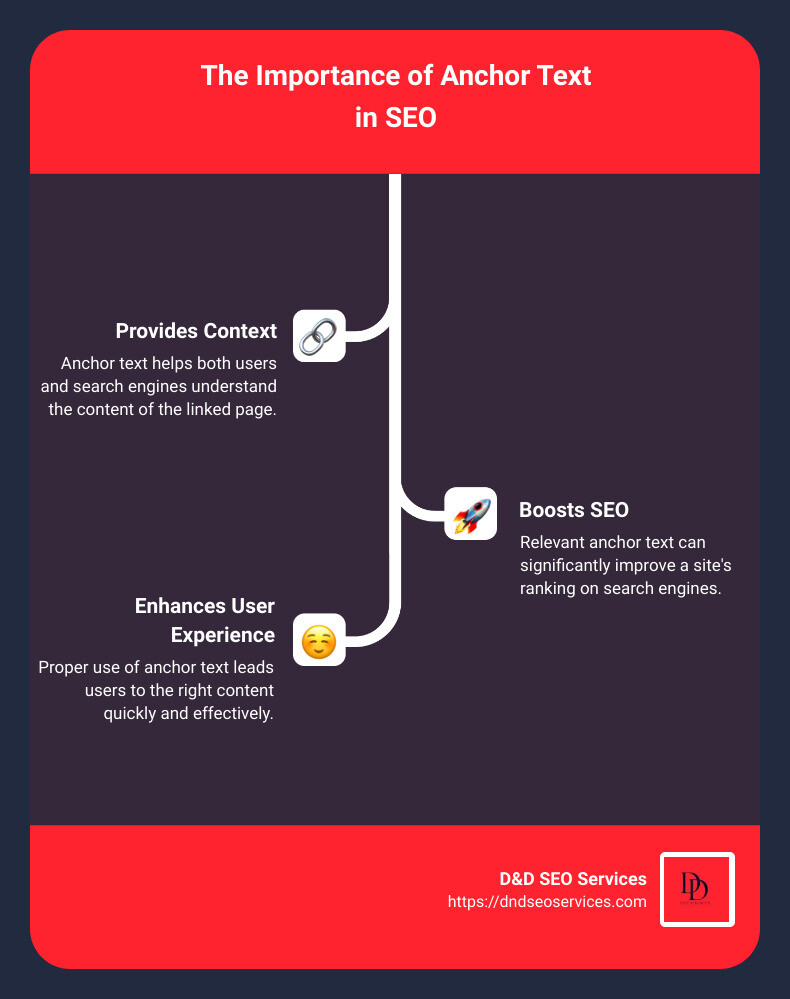The Rise of Semantic SEO
Why is Semantic SEO critical for high search rankings? Semantic SEO targets user intent and provides contextually relevant content, emphasizing the meaning behind searches rather than just keywords. Here’s what you need to know:
- SEO has evolved. Keyword stuffing is out; context and relevance are in.
- Google algorithms now prioritize user intent and content that answers questions holistically.
- Focus on user intent is essential—to provide real answers, not just keyword matches.
Understanding these principles will put you on the path to ranking higher in search results.
I’m Danielle Birriel, founder of D&D SEO Services. With over a decade of experience, I specialize in helping local businesses thrive through effective Semantic SEO: Complete Guide to Rank Higher on Search Results strategies. Let’s dive deeper into how semantic SEO can transform your online visibility.
Key Semantic SEO: Complete Guide to Rank Higher on Search Results vocabulary:
- Understanding and Leveraging Latent Semantic Indexing (LSI) Keywords
- The Power of Long-Tail Keywords in SEO Content Creation
- The Psychology of Clicks: How User Behavior Shapes SEO Strategies
What is Semantic SEO?
Semantic SEO is a modern approach to search engine optimization that goes beyond matching keywords to user queries. It focuses on understanding the intent behind those queries and the contextual meaning of the content. This method ensures that search engines can deliver more accurate and relevant results to users.
Semantics: The Core of Semantic SEO
Semantics is about the meaning behind words. In the context of SEO, it involves understanding the relationships between words and phrases to grasp the full context of a search query. For example, if someone searches for “apple,” are they looking for the fruit, the tech company, or a music label? Semantic SEO helps search engines make these distinctions.
Rand Fishkin once said, “It’s not just about the words you use; it’s about the meaning behind them.” This is the essence of semantic SEO.
User Intent: The Heart of Effective SEO
Understanding user intent is crucial. Are users looking for information, trying to make a purchase, or searching for a specific service? By focusing on user intent, you can create content that meets their needs more effectively.
For instance, if someone searches for “how to bake a cake,” they likely want a recipe, step-by-step instructions, and perhaps video tutorials. Semantic SEO ensures your content provides all this, making it more valuable and likely to rank higher.
Topic-Based Content: A Holistic Approach
Traditional SEO often focuses on individual keywords. Semantic SEO shifts the focus to topic-based content. This means creating comprehensive content that covers a topic in-depth, addressing multiple related questions and aspects.
Consider a blog post about “WordPress SEO.” Instead of just targeting the keyword “WordPress SEO,” you would cover subtopics like:
- How to optimize WordPress for SEO
- Best plugins for WordPress SEO
- Common mistakes in WordPress SEO
- Case studies of successful WordPress SEO strategies
This approach not only makes your content more valuable but also helps it rank for a broader range of related queries.
How to Implement Semantic SEO
Implementing semantic SEO involves several steps:
- Conduct Comprehensive Keyword Research: Use tools like Google’s “People Also Ask” to find related terms and synonyms.
- Understand User Intent: Tailor your content to meet the specific needs of your audience.
- Create In-Depth Content: Cover all aspects of a topic to provide comprehensive answers.
- Use Structured Data: Implement schema markup to help search engines understand the context of your content.
- Optimize for Topic Clusters: Organize content around topic clusters with a pillar page and related subtopics.
By focusing on semantics, user intent, and topic-based content, you can make your content more relevant and valuable, boosting your chances of ranking higher in search results.
Next up, let’s dive into the Benefits of Semantic SEO and how it can lift your search rankings.
How Semantic SEO Works
To understand Semantic SEO: Complete Guide to Rank Higher on Search Results, you need to know how search engines interpret and rank content. This involves several key algorithms and updates that Google has implemented over the years.
Knowledge Graph
The Knowledge Graph is a database that Google uses to understand the relationships between various entities like people, places, and things. It’s designed to provide more accurate and relevant search results.
For example, if you search for “Leonardo da Vinci,” Google not only shows you links to websites but also a sidebar with detailed information about him, his works, and related people. This is possible because of the Knowledge Graph, which connects all these pieces of information.
Hummingbird Algorithm
The Hummingbird algorithm, introduced by Google in 2013, was a major step towards semantic search. This algorithm focuses on understanding the context and intent behind search queries rather than just matching keywords.
For instance, if you search for “best place to buy running shoes,” Hummingbird helps Google understand that you’re looking for recommendations and shopping options, not just any page that mentions “running shoes.”
RankBrain
RankBrain is an AI-based component of Google’s algorithm that was launched in 2015. It helps Google process search queries and provide more relevant results. RankBrain learns from user behavior and continually improves its understanding of search intent.
For example, if users frequently click on a particular link when searching for “how to bake a cake,” RankBrain will prioritize that link in future searches for similar queries.
BERT Update
The BERT (Bidirectional Encoder Representations from Transformers) update, introduced in 2019, is another leap forward in understanding natural language. BERT helps Google understand the nuances of language, such as the importance of prepositions in a query.
For example, in the search query “best ways to invest in stocks for beginners,” BERT helps Google understand that the focus is on investment strategies specifically for beginners, not just any investment advice.
These algorithms and updates collectively improve Google’s ability to deliver more relevant and accurate search results, making Semantic SEO a critical strategy for improving your website’s visibility.
Next up, let’s dive into the Benefits of Semantic SEO and how it can lift your search rankings.
Benefits of Semantic SEO
Semantic SEO offers multiple advantages that can significantly boost your website’s performance. Let’s explore some of the key benefits:
Higher Search Rankings
The primary goal of Semantic SEO is to improve your search engine rankings. By focusing on the meaning behind search queries and creating content that answers user intent, you can achieve higher rankings.
A study showed that blog posts exceeding 2000 words often secure top 10 positions on Google. Long-form, comprehensive content signals to Google that your website is a credible authority on the topic.
Rank for More Keywords
With Semantic SEO, you don’t just rank for a single keyword; you rank for multiple related keywords. This is possible because your content covers a broad topic comprehensively.
For example, Salespanel’s blog post on “top 10 website visitor tracking tools” also discusses related topics like what website tracking is, its benefits, and why you might need it. This approach allows the post to rank for various related keywords, increasing its visibility.
Longer Visitor Retention
Semantic content keeps visitors on your site longer. When users find your content informative and comprehensive, they are more likely to stay and explore other pages.
By including multiple internal links and covering various subtopics, you can direct visitors to other relevant content on your website. This increases dwell time, giving visitors more chances to engage with your offerings and possibly convert into customers.
Featured Snippets
Getting your content featured in the “People also ask” section on Google can drive significant traffic to your site. According to Ahrefs, 43% of all searches now show this box.
For instance, if a person searches for “indoor lighting,” and your content is featured as a short answer in this section, you gain direct exposure to potential customers. To achieve this, make sure your content is detailed and answers related questions comprehensively.
Improved Visibility
Implementing structured data and optimizing for topic clusters can increase your chances of appearing in rich snippets and other prominent search features. This boosts your visibility and attracts more organic traffic.
Higher visibility means more opportunities for conversions, whether it’s purchasing a product, signing up for a newsletter, or another desired action.
By leveraging these benefits, Semantic SEO can significantly improve your search rankings and overall website performance.
Next, let’s explore how you can Implement Semantic SEO to achieve these benefits.
How to Implement Semantic SEO
Conduct Comprehensive Keyword Research
Semantic SEO is about understanding the full context of user queries, not just individual keywords. Start your journey with comprehensive keyword research.
Use tools like Semrush, Ahrefs, and Moz to identify intent-based keywords. These tools help you understand what your audience is searching for and group related keywords into keyword clusters. This way, you can target multiple relevant keywords on a single page.
Don’t forget to use social media analytics. Platforms like Twitter and LinkedIn can provide insights into what your audience is talking about. Use this information to find additional keywords and topics.
Understand User Intent
Understanding user intent is crucial. Ask yourself why a user is searching for a term and what they hope to find. This helps in creating content that matches their needs.
For instance, if someone searches for “best running shoes,” they might want product reviews, buying guides, or comparisons. Tailor your content to meet these needs and guide them through their user journey.
Optimize Titles and Meta Descriptions
Your titles and meta descriptions are the first things users see in search results. Make them count. Ensure they clearly reflect the intent of your content and include relevant keywords.
For example, if your content is about “how to bake a cake,” your title could be “Step-by-Step Guide: How to Bake a Delicious Cake.” This not only includes the keyword but also sets clear expectations for the user.
Write In-Depth Content Pieces
When it comes to semantic SEO, “go big or go home.” Write long-form content that covers the topic comprehensively. Use subheadings to break up the text and make it easier to read.
Visuals like images, videos, and infographics can make your content more engaging. For example, a blog post about “gardening tips” could include step-by-step photos or a video tutorial.
Use HTML Tags Efficiently
HTML tags like headings (H1-H6), bullet points, and text styles play a significant role in making your content readable. Use H1 for the main title, H2 for subheadings, and H3 for further subdivisions.
This not only improves readability but also helps search engines understand the structure of your content.
Add Structured Data Markup
Structured data helps search engines understand your content better. Use Schema.org to add structured data to your pages. This can include information like article type, author, and publication date.
Tools like the Google Structured Data Markup Helper can simplify this process. Structured data can make your content eligible for rich snippets, enhancing your visibility in search results.
Create Topic Clusters
A topic cluster strategy involves creating a central pillar page that covers a broad topic. Then, create cluster pages that dig into related subtopics. Link these pages to and from the pillar page to create a network of related content.
For example, if your pillar page is about “digital marketing,” your cluster pages could cover topics like “SEO strategies,” “content marketing,” and “social media tips.”
Internal linking within these clusters helps search engines understand the relationship between your pages, boosting your topical authority.
By following these steps, you can effectively implement Semantic SEO: Complete Guide to Rank Higher on Search Results and reap the benefits of higher rankings, increased visibility, and improved user engagement.
Next, let’s dive into optimizing for multiple keywords.
Semantic SEO: Complete Guide to Rank Higher on Search Results
Optimize for Multiple Keywords
Semantic SEO goes beyond traditional keyword research. Instead of focusing on single keywords, you optimize for multiple semantic keywords and related terms. This involves using synonyms, variations, and contextually related phrases to enrich your content.
For example, if you’re writing about “healthy eating,” you might include terms like “nutritious meals,” “balanced diet,” and “healthy recipes.” This approach helps search engines understand the broader context of your content, making it more likely to rank for various related queries.
Tips for Optimizing Multiple Keywords:
- Use LSI Keywords: Latent Semantic Indexing (LSI) keywords are terms that are contextually related to your main keyword. Tools like LSIGraph can help you find these.
- Incorporate Synonyms: Use different words that mean the same thing. For instance, “workout” and “exercise” can be used interchangeably.
- Natural Placement: Ensure keywords fit naturally within the content. Forced keywords can disrupt readability and harm your SEO.
Answer People Also Ask Questions
When you search on Google, you often see a “People Also Ask” (PAA) section. These are common questions related to your query. Addressing these questions in your content can improve your user experience and improve your chances of appearing in featured snippets.
How to Leverage PAA:
- Identify Common Questions: Use tools like Answer The Public to find popular questions related to your topic.
- Provide Clear Answers: Write concise, informative answers to these questions within your content.
- Structure Your Content: Use headings and bullet points to make answers easy to find.
For instance, if your article is about “digital marketing,” you might answer questions like “What is digital marketing?” or “How to start digital marketing?” This not only helps users but also signals to Google that your content is comprehensive and relevant.
Follow Topic Clustering
Topic clustering is a strategy where you create a pillar page that covers a broad topic and link it to cluster pages that dig into subtopics. This structure helps search engines understand the relationship between your content pieces, boosting your topical authority.
Example of Topic Clustering:
- Pillar Page: “Ultimate Guide to Digital Marketing”
- Cluster Pages:
- “SEO Strategies for Beginners”
- “Content Marketing Tips”
- “Social Media Marketing Techniques”
Each cluster page links back to the pillar page and to each other, creating a web of related content. This internal linking improves navigation for users and helps search engines crawl your site more efficiently.
Semantic SEO is about creating meaningful, context-rich content that answers users’ questions and meets their needs. By optimizing for multiple keywords, answering PAA questions, and following topic clustering, you can improve your search rankings and provide a better user experience.
Next, let’s address some frequently asked questions about Semantic SEO.
Frequently Asked Questions about Semantic SEO
What is a semantic SEO structure?
A semantic SEO structure organizes content into topic clusters. You start with a pillar page that covers a broad topic comprehensively. Then, you create cluster pages that dig into related subtopics and link back to the pillar page.
For example, if your pillar page is about “Healthy Eating,” your cluster pages might include “Nutritious Breakfast Ideas,” “Balanced Diet Tips,” and “Healthy Recipes for Kids.” This structure helps search engines understand the context and relationships between your pages, making it easier to rank higher for various queries.
How to optimize for semantic SEO in on-page SEO?
To optimize for semantic SEO in on-page SEO:
-
Use Related Keywords: Incorporate synonyms and contextually related terms. For instance, if your main keyword is “digital marketing,” use related terms like “online marketing” and “internet marketing.”
-
Create Comprehensive Content: Write in-depth articles that cover a topic thoroughly. This approach helps answer multiple user queries within a single piece of content.
-
Implement Structured Data: Use schema markup to help search engines understand your content better. Structured data can improve your chances of appearing in rich snippets, boosting your visibility.
-
Internal Linking: Link related pages to each other. This not only helps users steer your site but also sends strong relevance signals to search engines.
What is the significance of semantic search in modern SEO?
Semantic search is crucial in modern SEO because it focuses on understanding user intent and delivering accurate results. Here’s why it matters:
-
User Satisfaction: By understanding the context and intent behind search queries, search engines can provide more relevant and satisfying answers.
-
Accurate Results: Semantic search algorithms like Google’s Hummingbird, RankBrain, and BERT aim to grasp the meaning behind words, not just the keywords themselves. This leads to more precise search results.
-
Search Intent: Understanding what users are genuinely looking for helps in creating content that meets their needs, ultimately improving your site’s relevance and ranking.
Semantic SEO is about more than just keywords—it’s about creating content that provides real value to users and meets their search intent. By focusing on topic clusters, using related keywords, and implementing structured data, you can improve your SEO strategy and rank higher on search results.
Conclusion
At D&D SEO Services, we understand that navigating the complexities of Semantic SEO can be overwhelming. That’s why we offer personalized SEO strategies custom to meet the unique needs of your business. Whether you’re in Fort Myers or beyond, our local expertise and commitment to data-driven strategies ensure that your business stands out in search results.
Personalized SEO Strategies
Every business is different, and so are its SEO needs. We take the time to understand your business, your audience, and your goals. This enables us to create customized strategies that are effective and sustainable. From keyword research to content creation and optimization, we cover all aspects to help you rank higher and attract more traffic.
Local SEO Expertise
Being a local business ourselves, we know the ins and outs of the Fort Myers market. Our local SEO services are designed to help you connect with your local audience. We use proven techniques like citation building, local keyword optimization, and Google My Business management to improve your local search visibility.
Data-Driven Results
We believe in the power of data. Our strategies are backed by thorough research and analytics, ensuring that every action we take is aimed at achieving measurable results. From keyword research to performance tracking, we use data to guide our decisions and optimize your SEO strategy continuously.
Ready to lift your business with a robust Semantic SEO strategy? Contact D\&D SEO Services today to schedule a free consultation and find how we can help you achieve sustainable growth. Let’s transform your digital presence and achieve higher search rankings together.









